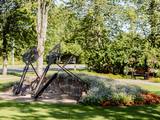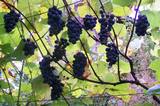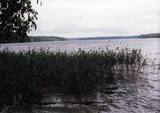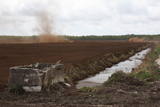| Nr | Name | Beschreibung |
|---|---|---|
|
Öun Drinks produziert aus estnischem Apfelsaft erfrischende Limonaden und Apfelwein. Es wird auch der Herstellungsprozess von Limonade gezeigt. Produkte werden zum Probieren und Kaufen angeboten. |
||
|
Parkā blakus pusloka tiltiņam ir novietotas trīs milzīgas dzelzs atslēgas, kuras balsta akmens mūris un metāla arkas. Tās simbolizē trīs vēsturiskos centrus un to vienotību – Siguldu, Turaidu, Krimuldu. Dobēs pie šī objekta sezonāli zied dažādi kultūraugi. |
||
|
Auces novads miniatūrā izveidots ar Auces novada nozīmīgākajiem un atpazīstamākajiem objektiem miniatūrā, kuri apdzīvoti ar mājdzīvniekiem. Iespēja Auces novada iedzīvotājiem un viesiem izveidot saikni ar dabu un vienlaicīgi iepazīt Auces novadu. Mazajiem apmeklētājiem izglītojoša saikne ar dzīvniekiem, iespēja tos pabarot ar saimnieku sarūpētajām veltēm. Veicināta Auces novada atpazīstamība caur miniatūriem objektiem. Tiek piedāvāta ekskursija, kuras laikā iespējams apskatīt 4 saimniecības: Zemnieku saimniecību ‘’Skabargas”, Lauku sētu ‘’Krastiņos’’, saimniecību ‘’Andulaiši’ un Lauku sētu ‘’Baltiņi’’. Ekskursija notiek gida pavadībā. Tiek gaidīti viesi, grupās no 10 cilvēkiem, ar iepriekšēju pieteikšanos. |
||
|
The rest complex is situated on the shore of the man-made water reservoir, and there are two saunas on the territory – the Big sauna and the Small sauna. In the building of the Big sauna it is possible to organise different events for as many as 40 people, and in summertime – till 60 people. In the Small sauna – up to 20 people. Apart from the saunas, there are offered 20 different picnic places with tables, places for grills and tents, volleyball playgrounds, boats and water-bicycles for rent. |
||
|
Nach der Durchquerung von Sigulda folgt der Waldweg dem Fluss Vējupīte zum Paradīzes-Hügel, wo eine steile Treppe hinunter in das alte Tal des Flusses Gauja und in die Schlucht des Flusses Vējupīte führt. Es schlängelt sich weiter über kleinere Wege durch Wiesen und überquert kleine Flüsse, deren Ufer Sandsteinaufschlüsse aufweisen. Die letzten sechs Kilometer dieses Abschnitts folgen einem kleineren Pfad entlang der Naturpfade von Līgatne. Auf diesem 5,5 km langen Weg können Sie einheimische Wildtiere und Vögel beobachten. Weiter auf dem Waldweg geht es die Hügel des alten Tals des Flusses Gauja hinauf, bevor es wieder hinunter in die tiefe Schlucht des Flusses Līgatne geht, wo sich das Dorf der ehemaligen Papierfabrik Līgatne befindet. Sie können dieses attraktive kleine Dorf erkunden, die Līgatne-Löffelfabrik, das Weingut und die Līgatne-Höhlen besuchen. Es gibt auch den Līgatne Net Park mit 4-7 m hohen Netzlabyrinthen zwischen den Baumwipfeln. Dieser Teil des Waldweges und des Gauja-Nationalparks ist durch einen allmählichen Übergang von verschiedenen Laubwäldern (Esche, Grauerle, Eiche, Birke, Linde) zu Nadelbeständen gekennzeichnet. |
||
|
This farm breeds sheep, rabbits, horses, African ostriches and other fowl, as well as shitake mushrooms. You can order and buy mushrooms, souvenirs made of ostrich feathers, and other farm products. |
||
|
Von Riga führt die Tour zu einem Ziegenhof, wo Sie lustige und findige Tiere erleben und exklusive Käse verkosten können. Weiter besuchen Sie das Landgut von Malpils und verkosten verschiedene Käse, die vor Ort aus Kuhmilch hergestellt sind. Danach führt die Tour Richtung des Flusses Daugava nach Skriveri, wo man ausgezeichnetes hausgemachtes Eis und die traditionell handgemachten Sahnebonbons "Gotina" verkosten kann. Als nächstes besuchen Sie die Ruinen der legendären Burg von Koknese. Am nächsten Tag führt die Tour zu einem ethnographischen Hof, auf dem auch heute gearbeitet wird und der sich an einem malerischen Ort in Jaunpiebalga befindet. Sie fahren auch zu einem Familienunternehmen, wo Käse und Teigwaren hergestellt werden. In der Nähe kann man in der ehemaligen Ziegelbrennerei zuschauen, wie Produktion aus Ton mit den Händen gemacht wird. Weiter besichtigen Sie die Stadt Cesis mit ihrer Altstadt und der mittelalterlichen Burg des Livländischen Ordens. Danach fahren Sie zu einem Hanfanbauer, bei dem Sie auf traditioneller Art vorbereiteten Hanf verkosten können. Weiter haben Sie eine Führung und Verkostung in der Eisfabrik von Rujiena. Sie übernachten in einer ehemaligen Mühle, wo auch heute die alten Geräte für die Herstellung von Wolle verwendet werden und besichtigt werden können. Der Rückweg nach Riga führt entlang der Küste. Sie können das Museum des größten Lügners der Welt – Münchhausen – besuchen und seinen fantastischen Abenteuergeschichten zuhören. Es ist wert, unterwegs auch Neunaugenfischer zu besuchen und einen Spaziergang an der Küste zu machen. |
||
|
Die ehemalige Kleinbahn – der Platz vom ehemaligen Bahnhof, der
Gepäckspeicher, das Wohnhaus vom Stationsleiter sowie der Pfad der Kleinbahn
sind immer noch erhalten.
|
||
|
The farm produces homemade wine made of rhubarb, birch juice and apples. Tour the winemaking facilities and examine the process. You can taste and purchase products. |
||
|
Находится в стороне от площади Куршу, ул. Э.Венденбаума, д. 1. Старейшая церковь города, сведения о которой сохранились с 1508 года. Первый храм на этом месте был построен из дерева. После неоднократных перестроек (последняя – в 1893 г. под руководством архитектора Лиепаи Пауля Макса Берчи) храм приобрел теперешний вид в неоготическом стиле с башней высотой около 60 м. Церковный интерьер славится одним из самых выдающихся шедевров времен барокко в Латвии – алтарем (резчик по дереву Николя Сефренс младший), который в 2012 году отметил свое 350-летие.Алтарь считается одной из самых выдающихся работ Восточной Европы того времени. Ретабло алтаря (5,8 x 9,7 м) известно тематическим циклом страданий Иисуса. В храме находится третий по величине орган Латвии, который построен по эскизам композитора и органиста Альфреда Калниньша. Церковь можно осмотреть изнутри и подняться на колокольню. |
||
|
Eine alte Ortschaft am linken Ufer des Flusses Nemunas. Liškiava-Kirche und Kloster, heiliger Berg und Burgberg mit den Ruinen der am Ende des 14. Jh unter Leitung von Vytautas der Großen gebauten Burg. Ein Kultstein mit einem Kühstapfen.
|
||
|
Tas atrodas pie „Burtnieku” mājām Īlē, kur viņš dzīvojis no 1837. – 1845. gadam. Tēvs Juris Barons apglabāts Īles kapsētā. Savu vārdu nemirstīgu Krišjānis Barons darījis, vācot, sistematizējot un sastādot Latvju Dainu krājumu. Tautasdziesmas jeb dainas ir mazi, ritmiski dzejolīši, parasti četrrindes. Pie Latvju dainu vākšanas Barons pavadījis sava mūža lielāko daļu – apmēram 25 gadus gandrīz dienu pie dienas. |
||
|
The visitors are offered the excursion around the wine garden and the story about different sorts of grapes and the secrets of wine-making. During the excursion the vistiors can learn about the traditions of growing grapes in Latvia, to see and taste the newest tendencies of grape selectioning,as well as receive advice on growing and tending grapes. It is also possible to try home-made wines and buy grapes saplings. |
||
|
A very beautiful and expressive tree, it is found on the land of what was once the Vīceži Semi-estate.
|
||
|
Der Wasserturm von Ķemeri – wurde
1929 gebaut. Im Turm wurden damals Wasser
und Mineralwasservorräte gespeichert. Bis zum
Zweiten Weltkrieg konnten die Besucher vom
Kurort, vom Sichtplatz in 42 m höhe, die
Umgebung von Ķemeri genießen.
|
||
|
Ap 9,5 km garais un līdz kilometru platais ezers atrodas subglaciālā – t.i. ledāja veidotā vagā, tādēļ tas ir ne tikai Lietuvas, bet arī otrs Baltijas dziļākais ezers (pēc dažādiem avotiem 60,5 m vai 62,5 m). Tauragna dienvidu krastā paceļas Taurapils pilskalns (Taurapilio piliakalnis). Saglabājušies nostāsti gan par pagānu priesteri, kas te dzīvojis, gan nogrimušu baznīcu, gan laikiem, kad pilskalnu no visām pusēm apņēmis ūdens. No pilskalna plakuma paveras visaptverošs skats uz Tauragnu. |
||
|
The tower on the eastern shore of Lake Engure (next to the meadow for wild cattle, accessible from the side of Bērzciems) offers a view of the reeds, small islands, Great Island, cows and horses of the north-eastern part of the lake. The tower on the northern shore of the lake (accessible from the side of Mērsrags) offers a look at the boating facility and the very overgrown northern part of the lake. The tower at the north-western shore of the lake (accessible from the side of Ķūļciems) shows the Apaļrova island (a footpath), stands of juniper, the boating facility, and the mosaic-like landscape of the lake itself.
|
||
|
You can go fishing on Lake Usma and then the lady of the house will cook tasty fish soup and smoked fish from what you catch. You can rent a boat, take part in fishing and casting of nets (in the winter, too), or take a cutter trip on the lake. You can also taste canned smoked bream and go horseback riding. |
||
|
Nature restricted area is established to protect various wetland habitats – Big Kirba Bog and protected plant species within it. Only the West part of the Bog is a protected nature area. The rest of the bog is used mainly for intensive extraction of peat and large cranberry cultivation. Nature restricted area of the bog has no tourism infrastructure therefore is not useable for tourist visits.
|
||
|
The origins of the castle that was built in the style of Classicism date back to 1784. Later it was rebuilt into a two-story building with a portico with four columns at its centre. A new period in the development of the state began in 1993, when restoration of the buildings began. The estate currently houses a children’s village, while the mansion is now a hotel.
|
||




























